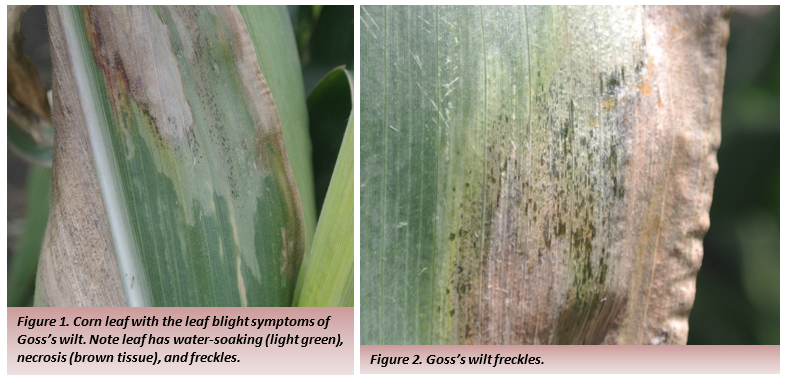Expected Yield Loss from Goss’s Wilt
This page was adapted from the article, "Goss’s Wilt - Yield Loss Question," which appeared in Crop & Pest Report on July 8, 2021.
One common question is how much yield loss can we expect from this disease?
To begin, Goss’s wilt is the most important corn disease in North Dakota (found in 65% of scouted fields in 2020) and has two primary symptoms; systemic wilt and leaf blight. Systemic wilt results from an early infection (V2-V6) leading to discolored vascular tissue and plant death. Leaf blight is more common and can occur at any point in the growing season. Leaf blight symptoms begin as irregular water soaked lesions running along the leaf veins (Figure 1). As the lesions mature, the lesions will turn brown, “freckles” can be observed (Figure 1 and 2), and photosynthetic activity of plants is disrupted.

The yield loss of a single systemically infected plant is 100%. The yield loss from the leaf blight phase will depend on the level of susceptibility in a corn hybrid, growth stage when infection occurs, and the prevalence of the disease in the field. Small plot research funded by the ND Corn Utilization Council indicated that yield losses between 34-41% occurred on a susceptible corn hybrid when infected at V6 to V10. In that same study, yield losses of 6%-11% were observed on a resistant hybrid when infected at V6 to V10. Infections that occur at the R1 stage result in yield losses of 2%-3% for both resistant and susceptible hybrids.
Andrew Friskop
Extension Plant Pathology, Cereal Crops